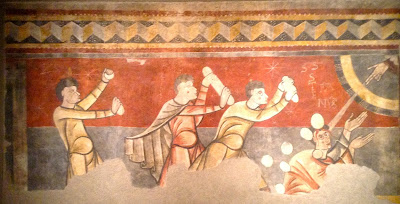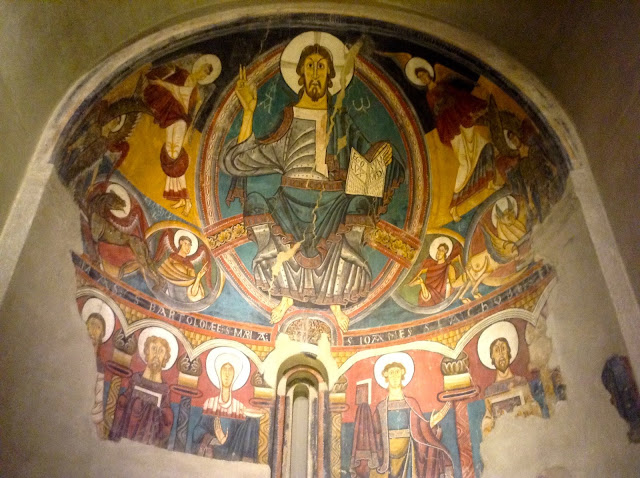The surviving frescoes that belong to the Catalan romanesque churches of the Pyrenees are today held in the Museum of Catalan National Art on Montjuic in Barcelona.
Santa Maria d'Aneu (Vall d'Aran)
Sant Climent de Taull (Vall de Boi)
Santa Maria de Taull (Vall de Boi)
The frescoes, sculptures, and architectural detail of these early Pyrenean churches were a continuous inspiration to nineteenth-century Catalan architects: Puig i Cadafelch, Domènech i Montaner, and of course Antoni Gaudí. But almost from the time they were salvaged and brought to Barcelona, the frescoes exerted a peculiar fascination on the more modern Catalan artists - notably Joan Miró, who never spent a year without long visits to the Museum of Catalan Art. And if you look at the details in works like the Sant Climent painter’s, you see why. On one wall, David is killing Goliath. The giant is dressed in a sort of tube of chain mail, like a giant lugworm. He floats in the air. His hand sticks out - a wildly disproportionate flipper, a separate body part with a bizarre life of its own. One realises that one has seen it before: in the disembodied hands and feet of the twentieth-century master of Montroig, those queer signs for human anatomy that take over the space of the painting. Miró always loved the metamorphic, the bestial, the fabulous. And then there are the more general formal properties. The hard wiry outlines in Catalan Romanesque painting, the flat declarative shapes silhouetted on clear background fields of color, the way that widely separated forms energise the flatness between them - all this seems deeply Miróesque. But of course it is better to say that Miró was deeply Romanesque, especially since Guifré the Hairy’s brother was also named Miró, and Joan Miró was fascinated by hair, the more anal or genital the better.




























































No hay comentarios:
Publicar un comentario